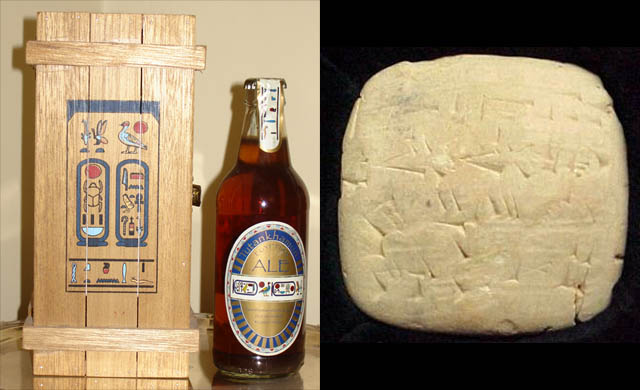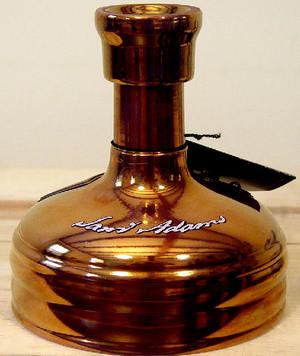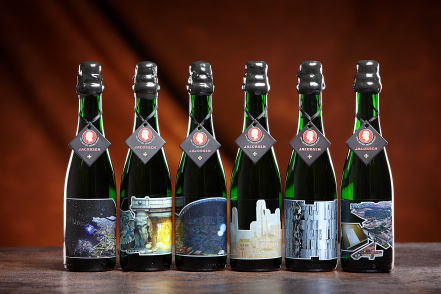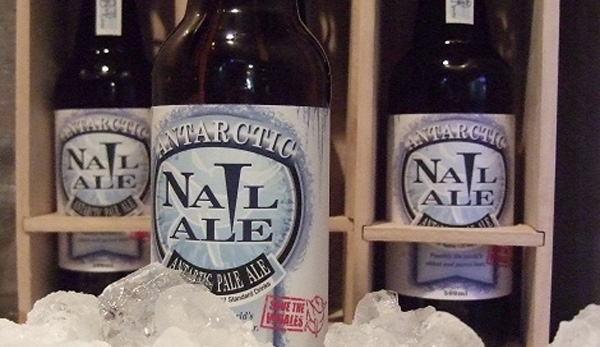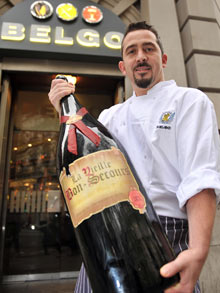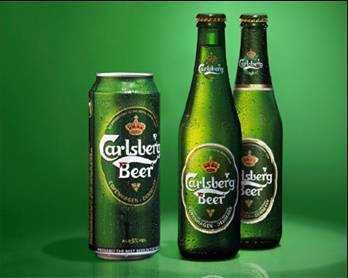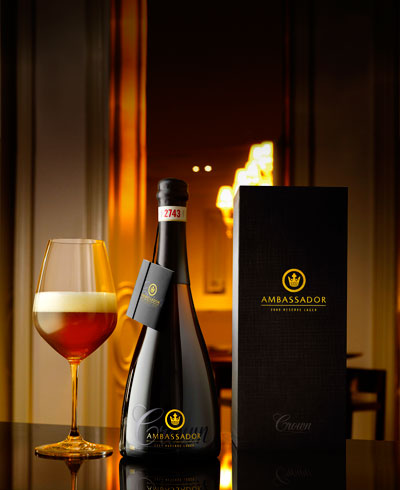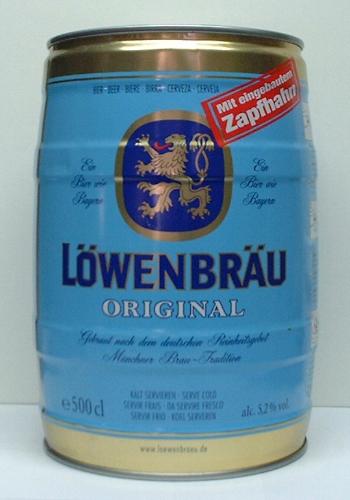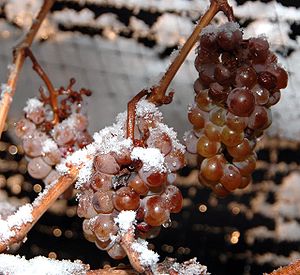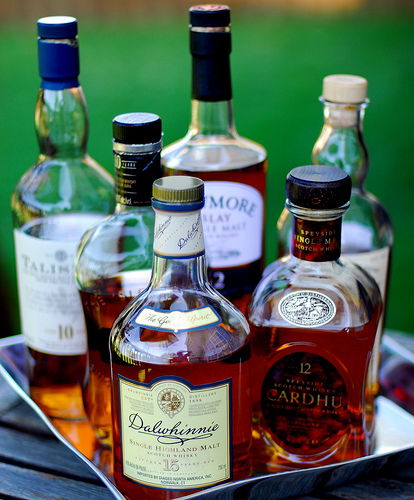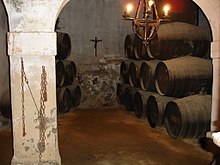All types of red wine are made by growing and processing red (or black) grapes. The wine that is the end result will vary greatly, depending not only upon the type of grape grown, but several other factors.
These factors include in which country and region the grapes are grown, how the climate, temperature, rain amount, and soil conditions affect the grapes during their growing season, and how each individual wine maker treats the grapes once they are harvested. Red wine grapes, like white wine grapes, are grown in several regions of the world.
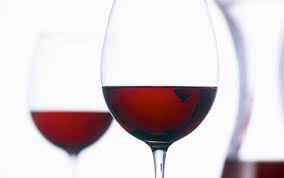 |
| Red wine |
In the United States, red wine grapes are primarily grown in California, New York, Oregon and Washington.
In Europe, the majority of red wine grapes will be found in the Beaujolais, Bordeaux, Bourgognes, Loire and Rhone regions of France. Red wine grapes are also grown in Argentina, Australia, Chile, Italy, South Africa, and Spain.
Most types of red wine grapes produce a more complex wine than white wines grapes. This is because red wine grapes stay on the vine longer due to their longer growing seasons in warmer climates. It’s also because the skins of red wine grapes remain in contact with their juice, giving red wine its color, tannin and flavor.
The most common types of red wine grapes are:
Barbera (bar-BEHR-uh)
Grown most successfully in Italy's Piedmont region, Barbera is quite acidic with full body
and light tannins. It is commonly used as a
blending wine.
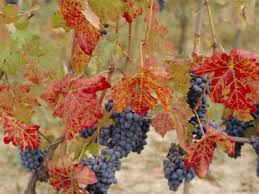 |
| Barbera grapes |
Brunello (broo-NEHL-oh)
Brunello is an offshoot of the Sangiovese grape. It is notable because it is the only grape permitted for Brunello di Montalcino, a rare, expensive, fruity and bold Tuscan red wine.
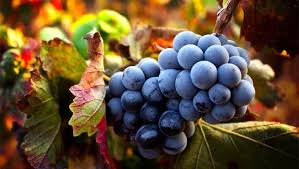 |
| Brunello grapes |
Cabernet Franc (cab-er-NAY FRANK)
Cabernet Franc is more often blended with other grapes than bottled by itself. Cabernet Franc is light to medium bodied and sometimes made into a wine called Chinon. It is most impressively grown in France’s Loire (luWAR) Valley, although it is usually overshadowed by the more popular Cabernet Sauvignon. Cabernet Franc is also grown in California and New York, and is gaining popularity in other regions.
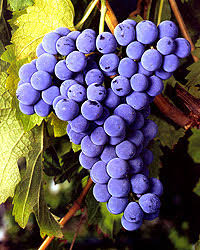 |
| Cabernet Franc grapes |
Cabernet Sauvignon (cab-er-NAY SO-vin-yon)
Cabernet Sauvignon can be found in many of the wine regions mentioned above. In the Bordeaux region of France, it is considered the noblest grape of all. It is, in fact, the grape that makes fine Bordeaux wines. Cabernet Sauvignon can age well for decades. It is dark purple or ruby in color, medium to full bodied, and has a beautiful array of intense aromas and flavors. Cabernet Sauvignon would be considered a dry red wine and blends well with Sangiovese, Merlot and Shiraz.
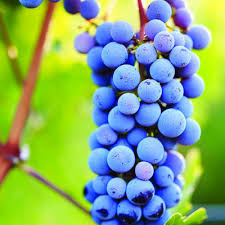 |
| Cabernet Sauvignon grapes |
Dolcetto (dole-CHET-to)
Dolcetto is another grape grown almost exclusively in the Piedmont region of Italy. It produces fruity wines with aromas and flavors of licorice and almonds. It does not age as long as the Barbera or Nebbiolo grape.
 |
| Dolcetto grapes |
Gamay (ga-MAY)
Gamay is what the wines from the Beaujolais region of France are made of. Even though two “Gamay” wines are produced in California, they are not true Gamay and their quality does not come close to their French cousins. With its lower alcohol content, Gamay is meant to be drunk soon after it is bottled. It is fresh, light and fruity.
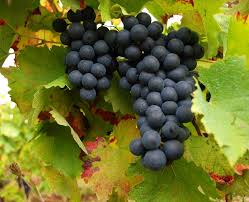 |
| Gamay grapes |
Grenache (greh-NAHSH)
Grenache is grown in Spain and California, but most notably in the southern Rhone valley of France. It is a very drinkable wine and in the past has been used in several red and rose jug wines in California. However, Grenache is gaining popularity as a fine stand alone grape in many areas. It is also commonly blended with Mourvedre and Sarah. Grenache is medium to full bodied with good structure and raspberry flavor.
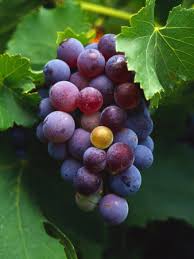 |
| Grenache grapes |
Malbec (MAHL-beck)
Malbec is now the grape of Argentina where it thrives in their hot, dry summers. Once important in Bordeaux and the Loire Valley, it is one of the types of red wine grapes losing popularity there. Its acidity can vary and it is frequently blended with other Bordeaux varieties.
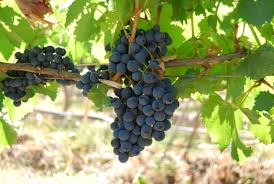 |
| Malbec grapes |
Merlot (mur-LO)
Merlot has become very popular in the last 10 years. It is one of the more drinkable types of red wine with its low acidity and mellow softness. Merlot is grown widely in many of the regions mentioned above and can be blended, particularly with Cabernet, or stand alone. Merlot has rich flavors of blackberry, plum and cherry.
 |
| Merlot grapes |
Nebbiolo (NEH-bee-oh-low)
Nebbiolo is another of the types of red wine grape from Piedmont, Italy and is responsible for many of Italy’s finest red wines. Nebbiolo tends to be light and quite dry with high acidity, so it does well with considerable aging.
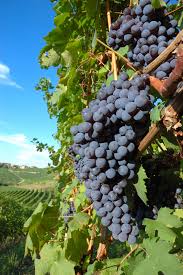 |
| Nebbiolo grapes |
Pinot Noir (PEE-no NWA)
Pinot Noir is a difficult grape to grow, but yields an exceptional wine with great complexity when conditions are correct. It is grown in the Burgundy region of France, in Oregon and in the cooler regions of California. Many California grown Pinot Noir grapes are used for rose style champagnes. It has light to moderate body with deliciously varied aromas and flavors.
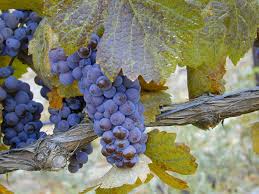 |
| Pinot noir grapes |
Sangiovese (san-geeo-VEHS-eh)
The signature red wine grape of the Tuscany and Chianti regions, Sangiovese has been produced with little success outside of Italy. A good Sangiovese can be beautiful and complex, with varied aromas and flavors. It is frequently blended with Cabernet.
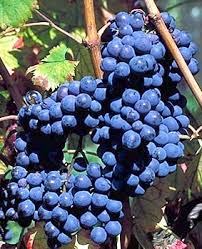 |
| Sangiovese grapes |
Syrah or Shiraz (sih-RAH or shih-RAHZ)
Known as Shiraz in Australia and South Africa and as Syrah in California and France, this wine has low to moderate acidity making it very drinkable. Shiraz/Syrah exhibits wonderful flavors of spice and fruit. Many think the French version is more acidic, therefore better to accompany food than the Australian version. Shiraz/Syrah is blended with Grenache and Cabernet.
It is thought that Petit Syrah, which thrives in sunny California, is not related to Syrah.
 |
| Shiraz grapes |
Tempranillo (temp-rah-NEE-yo)
Grown originally in the Rioja region of Spain, Tempranillo is a full bodied red and is often blended with Grenache.
 |
| Tempranillo grapes |
Zinfandel (ZIHM-fan-dell)
Zinfandel wine is most always grown in California, where unlike other red wine grapes, it thrives in the heat and sunshine. It has low to moderate acidity and medium to full body with jammy, spicy flavors. Zinfandel is often blended with other grapes but not named on the bottle.
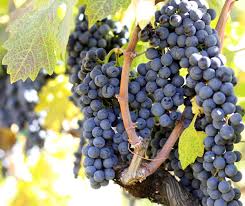 |
| Zinfandel grapes |
